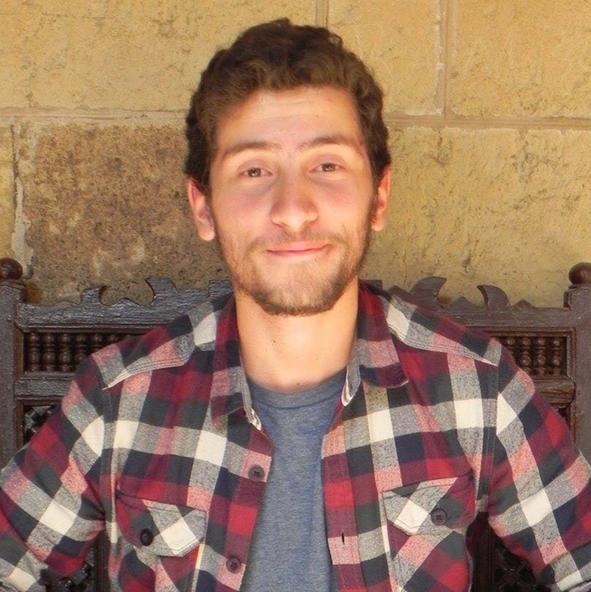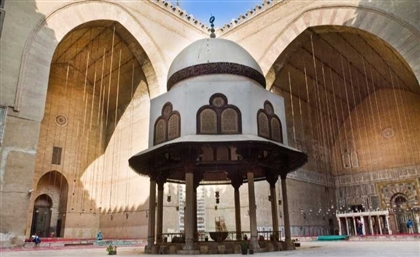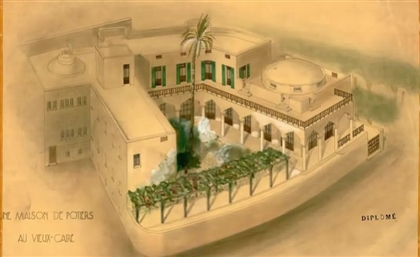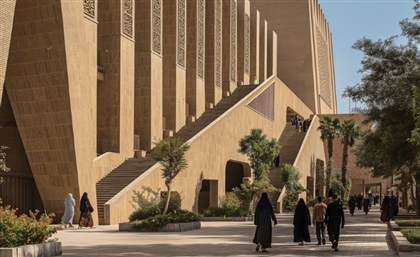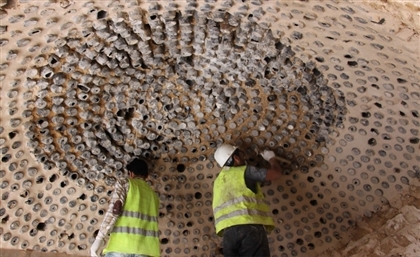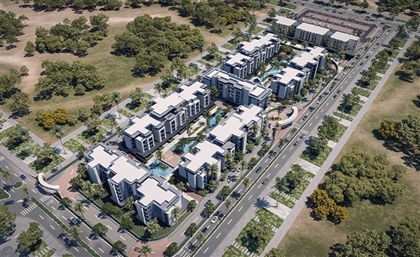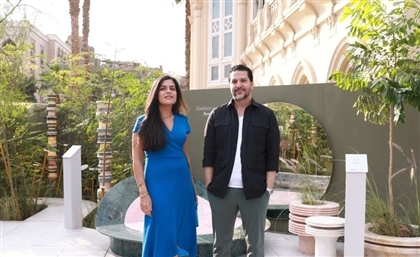The Publicly Curated Beauty of Egypt's Mosques
In mosques across Old Cairo, worshippers would donate carpets which gatekeepers arranged intuitively. Karim El Hayawan found in this random but consistent behaviour the ‘beauty of intention’.
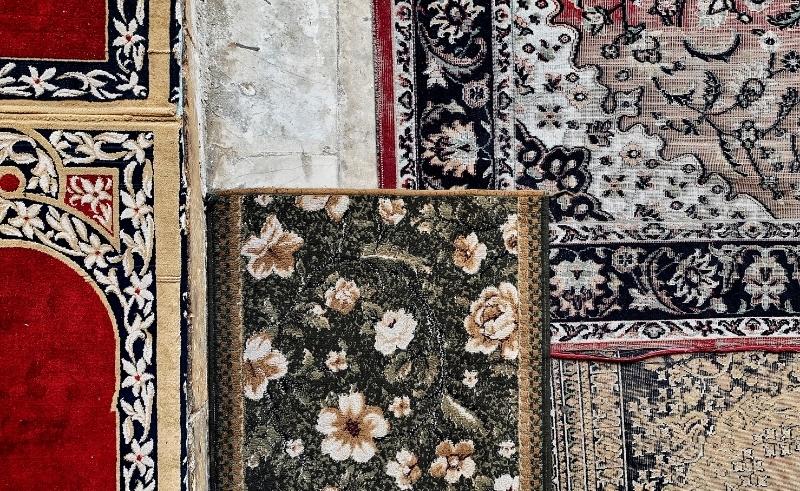
Pacing through the alleys of Old Cairo, visual artist and architect Karim El Hayawan entered the Mosque and Madrassa of Sultan Al Ghouri, where he noticed a random array of carpets on its floor. They were gifted by neighbouring worshippers and arranged by the gatekeeper. Spurred by curiosity, El Hayawan visited more old mosques to find the same behaviour present, just with different aesthetics.
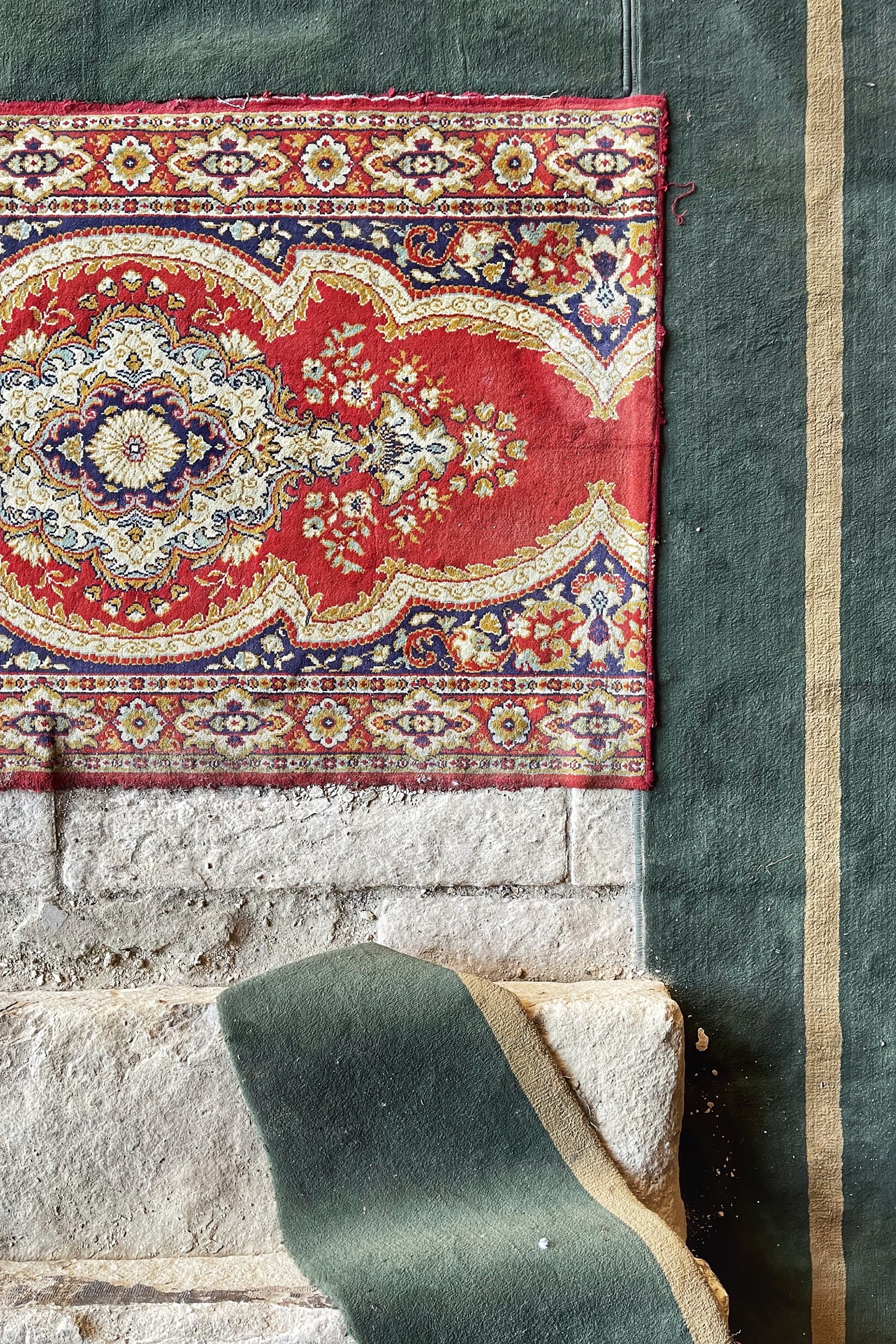 El Hayawan found this accidental discovery to be perplexing and inspiring. Taken in by the visual dialogue that organically formed between them, El Hayawan spent three years photographing the donated rugs and debuted them at the ‘Between Here & Elsewhere’ exhibition at SOMA Art Gallery in 2021, exploring within it the imagined narrative of these rugs. Who did they belong to? How did they get there? And why were they displayed the way they were?
El Hayawan found this accidental discovery to be perplexing and inspiring. Taken in by the visual dialogue that organically formed between them, El Hayawan spent three years photographing the donated rugs and debuted them at the ‘Between Here & Elsewhere’ exhibition at SOMA Art Gallery in 2021, exploring within it the imagined narrative of these rugs. Who did they belong to? How did they get there? And why were they displayed the way they were?
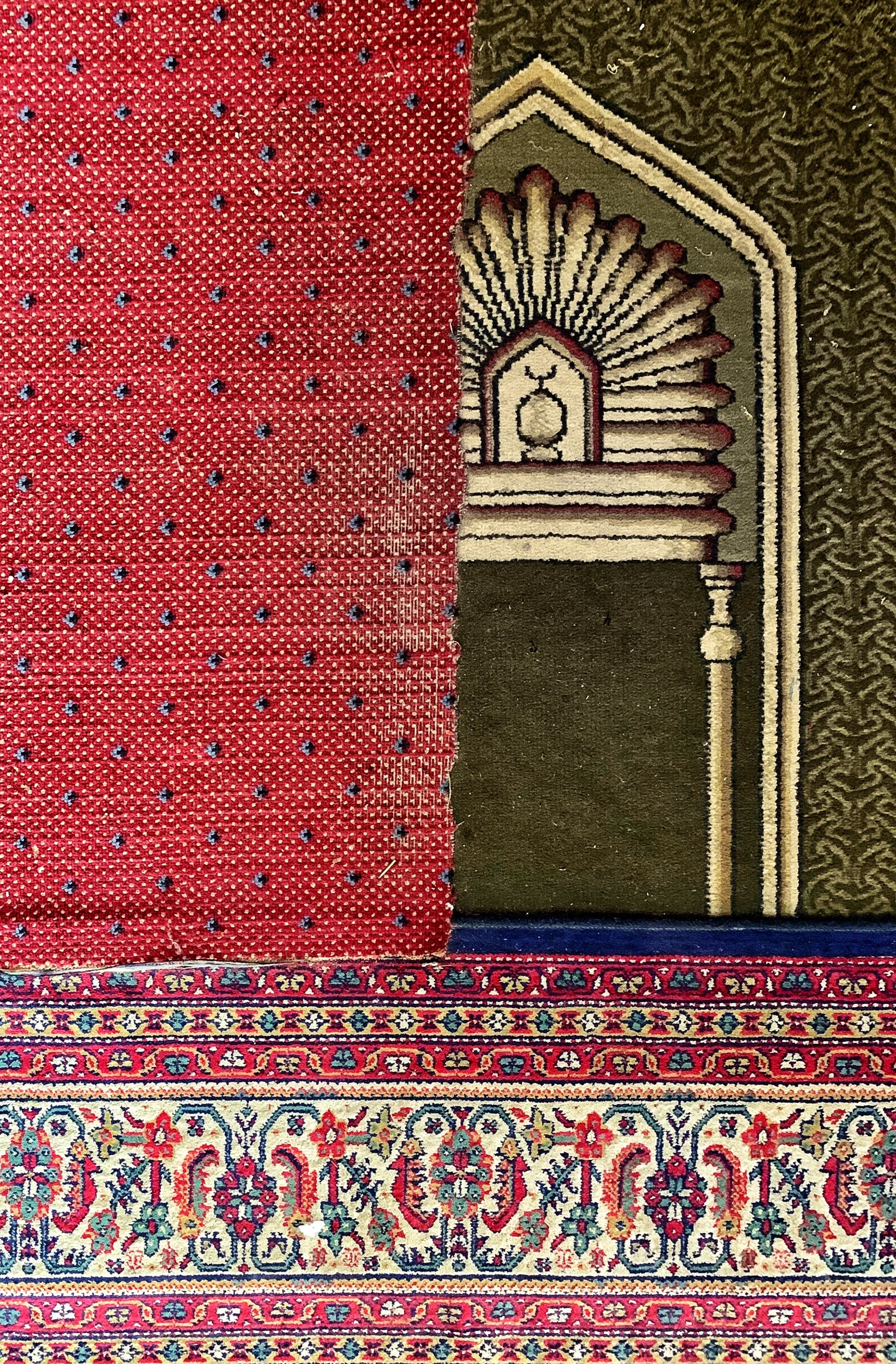 More recently, ‘Between Here & Elsewhere’ was exhibited at El Gouna Photo Week, whose organisers valued the layers of visual culture presented by the rugs. They were accompanied by a video projection featuring contemporary dancer Amina Abouelghar who interpreted their essence to the vocal renditions of Ghalia Benali.
More recently, ‘Between Here & Elsewhere’ was exhibited at El Gouna Photo Week, whose organisers valued the layers of visual culture presented by the rugs. They were accompanied by a video projection featuring contemporary dancer Amina Abouelghar who interpreted their essence to the vocal renditions of Ghalia Benali.
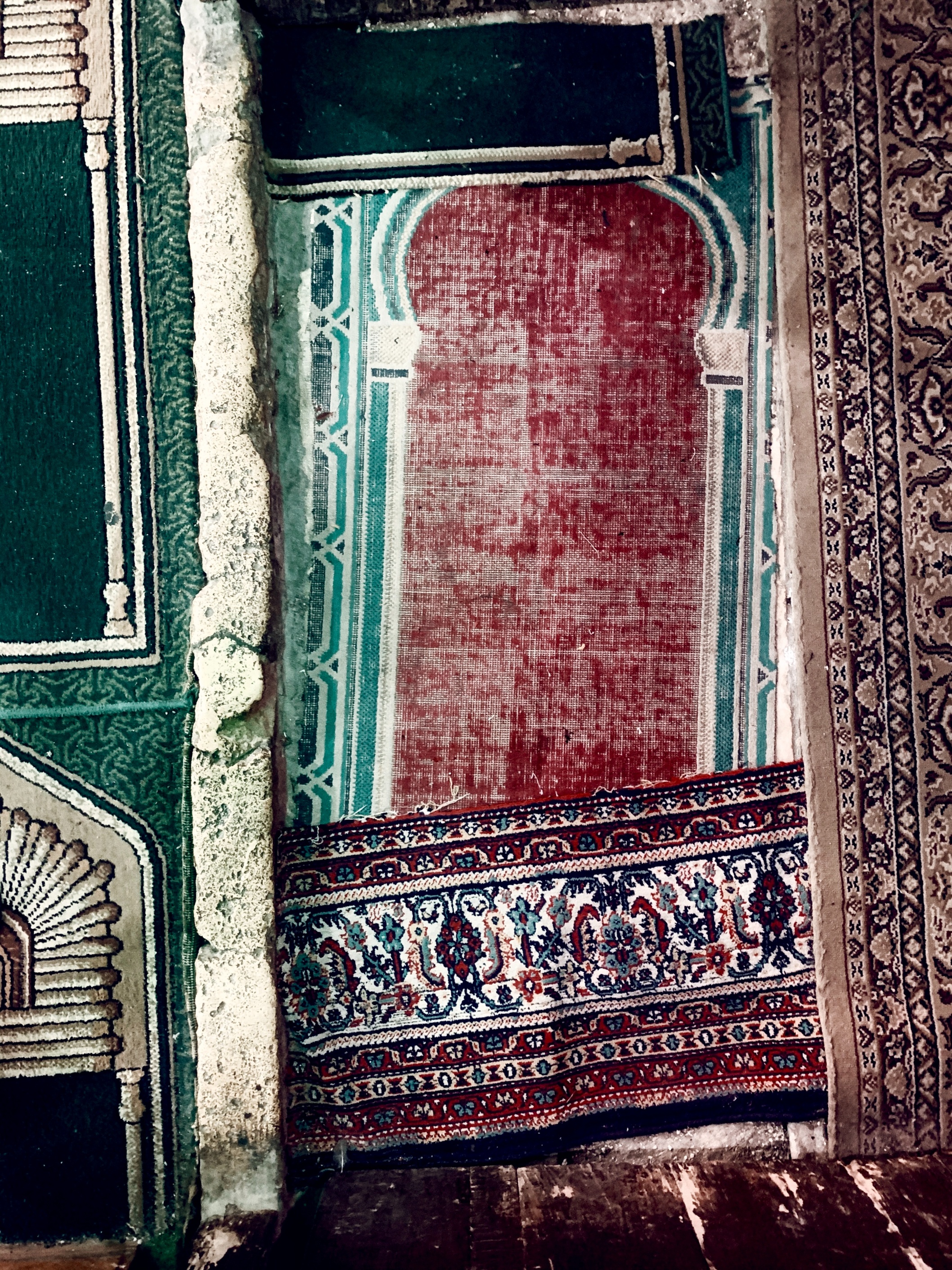 “We need to relearn astonishment. That beautiful feeling we seem to have drifted away from,” El Hayawan tells SceneHome. “Keep your senses open and embrace the world with all the surprise it has to offer.”
“We need to relearn astonishment. That beautiful feeling we seem to have drifted away from,” El Hayawan tells SceneHome. “Keep your senses open and embrace the world with all the surprise it has to offer.”
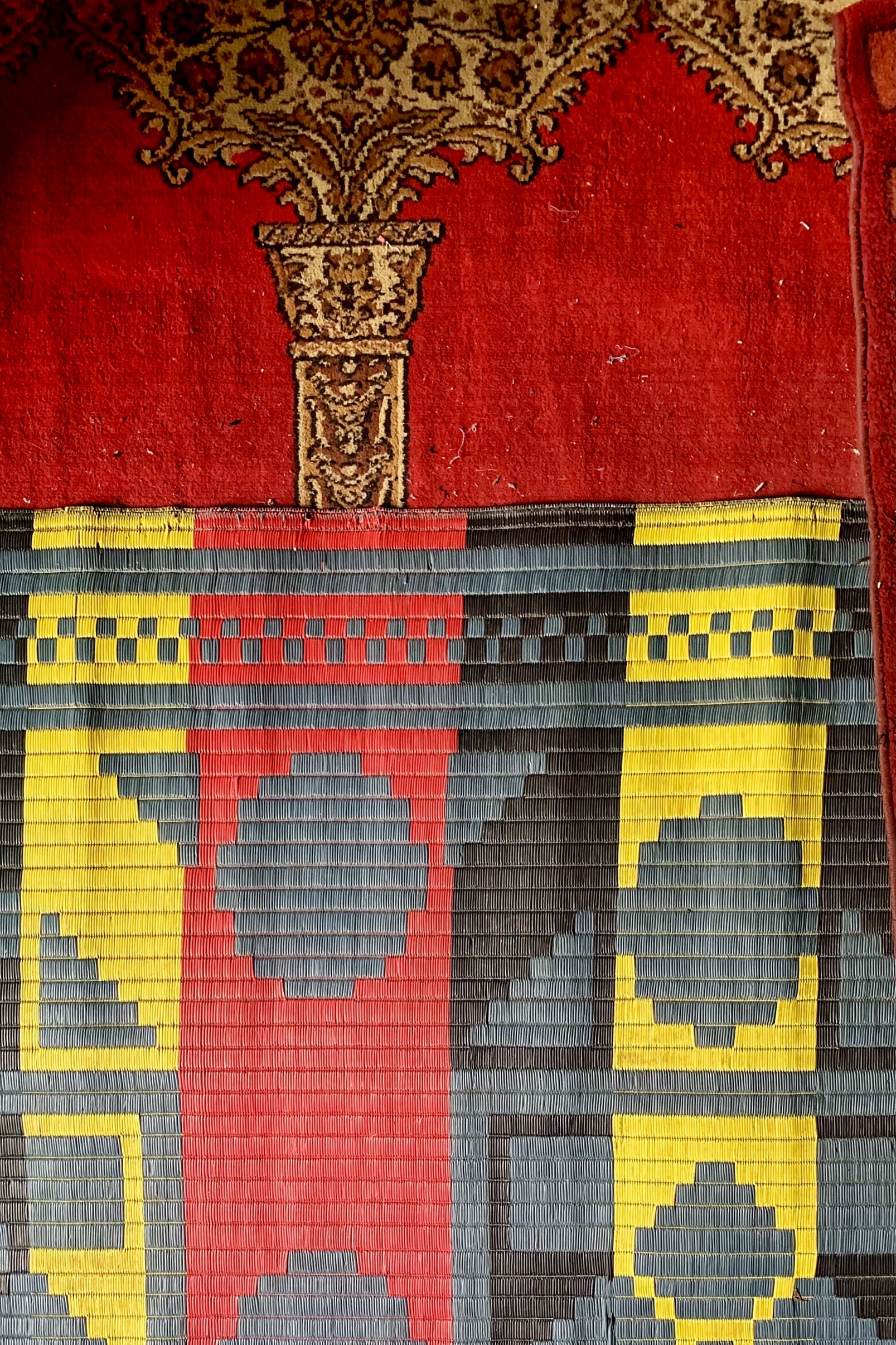 “We can’t escape functionality, design is always based on need,” El Hayawan explains. “Mosque gatekeepers were curators in their own right. The ultimate goal of these carpets is to provide comfort for prayer and meditation, but they were also turned by chance into unrepeatable canvasses. These images are triangular exchanges between the artists, the anonymous rug owners, and the viewers.”
“We can’t escape functionality, design is always based on need,” El Hayawan explains. “Mosque gatekeepers were curators in their own right. The ultimate goal of these carpets is to provide comfort for prayer and meditation, but they were also turned by chance into unrepeatable canvasses. These images are triangular exchanges between the artists, the anonymous rug owners, and the viewers.”
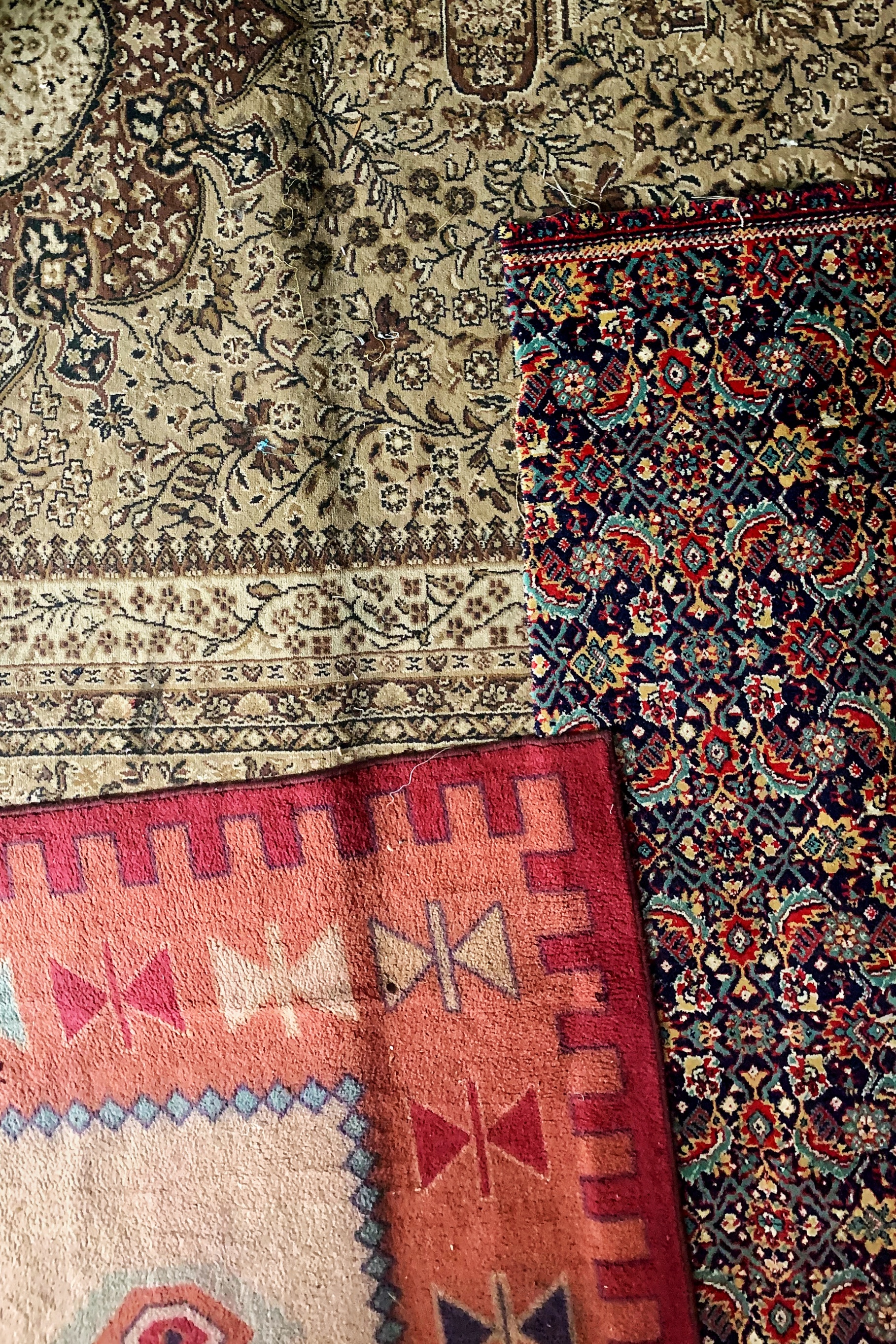 Despite possibly never meeting, these carpets created a dialogue between their owners. “The pattern was the same in every old mosque,” El Hayawan shares. “There was an intuitively shared behaviour between people and their mosques. It turned into an obsession of mine. Lasting three years, mostly, aimlessly.”
Despite possibly never meeting, these carpets created a dialogue between their owners. “The pattern was the same in every old mosque,” El Hayawan shares. “There was an intuitively shared behaviour between people and their mosques. It turned into an obsession of mine. Lasting three years, mostly, aimlessly.”
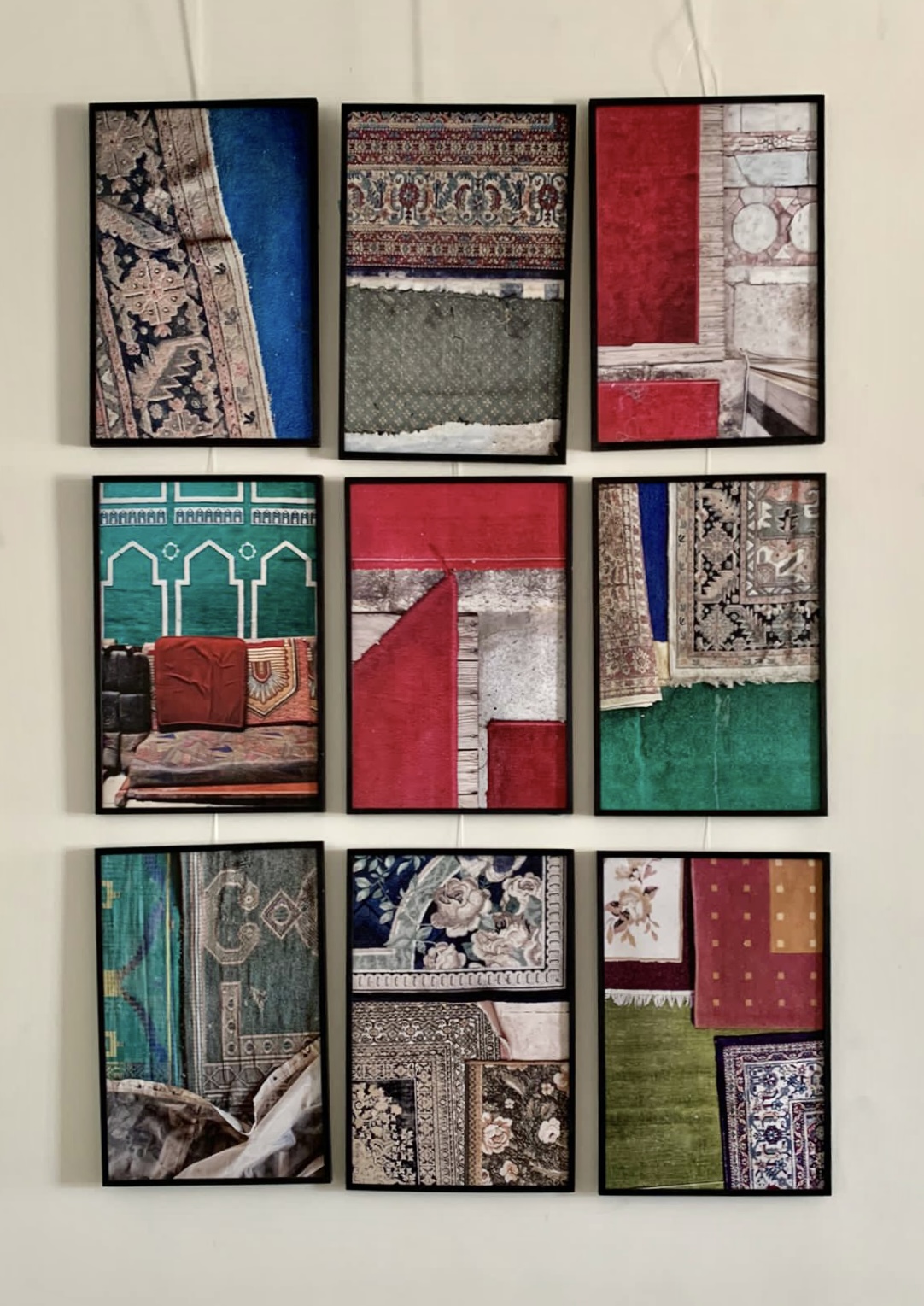 El Hayawan usually lets the fruit fall off its tree naturally, which is to say, he prefers to leave his photographic endeavours unplanned, only turning them into organised collections or exhibitions when the circumstances are right. It was only when his friend and fellow visual artist Hani Rashed stumbled upon El Hayawan’s photos that he considered making them public. Two weeks later, SOMA Art Gallery caught wind and requested a solo exhibition in 2021.
El Hayawan usually lets the fruit fall off its tree naturally, which is to say, he prefers to leave his photographic endeavours unplanned, only turning them into organised collections or exhibitions when the circumstances are right. It was only when his friend and fellow visual artist Hani Rashed stumbled upon El Hayawan’s photos that he considered making them public. Two weeks later, SOMA Art Gallery caught wind and requested a solo exhibition in 2021.
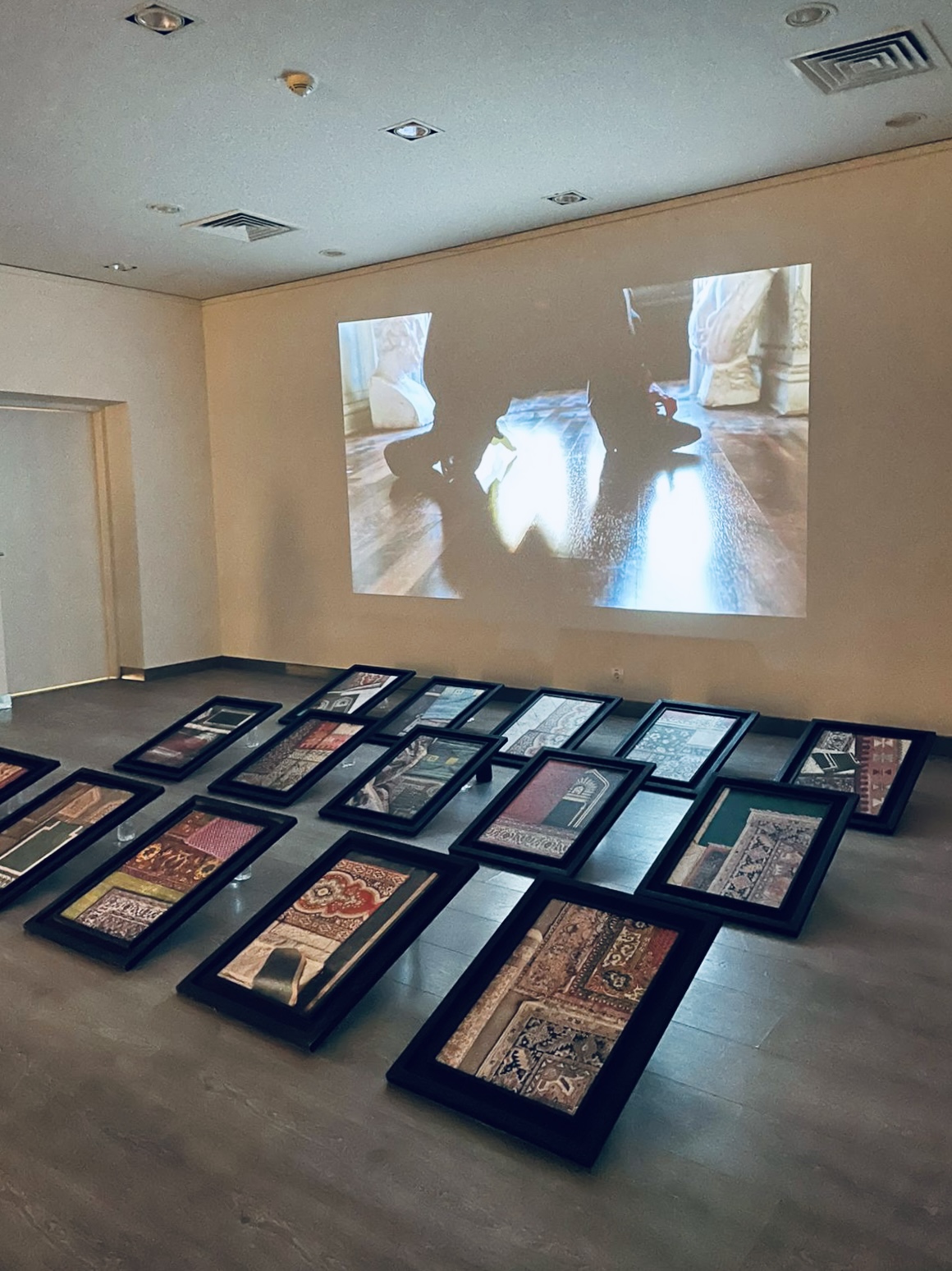 ‘Between Here & Elsewhere’ was dedicated to the artist’s favourite uncle, Ebrahim El Hayawan, who had recently passed away. Ebrahim El Hayawan was a prolific physician who would leave the most comical and surrealist remarks on his nephew’s photography. “My late uncle was as multilayered as these organic totalities are.”
‘Between Here & Elsewhere’ was dedicated to the artist’s favourite uncle, Ebrahim El Hayawan, who had recently passed away. Ebrahim El Hayawan was a prolific physician who would leave the most comical and surrealist remarks on his nephew’s photography. “My late uncle was as multilayered as these organic totalities are.”
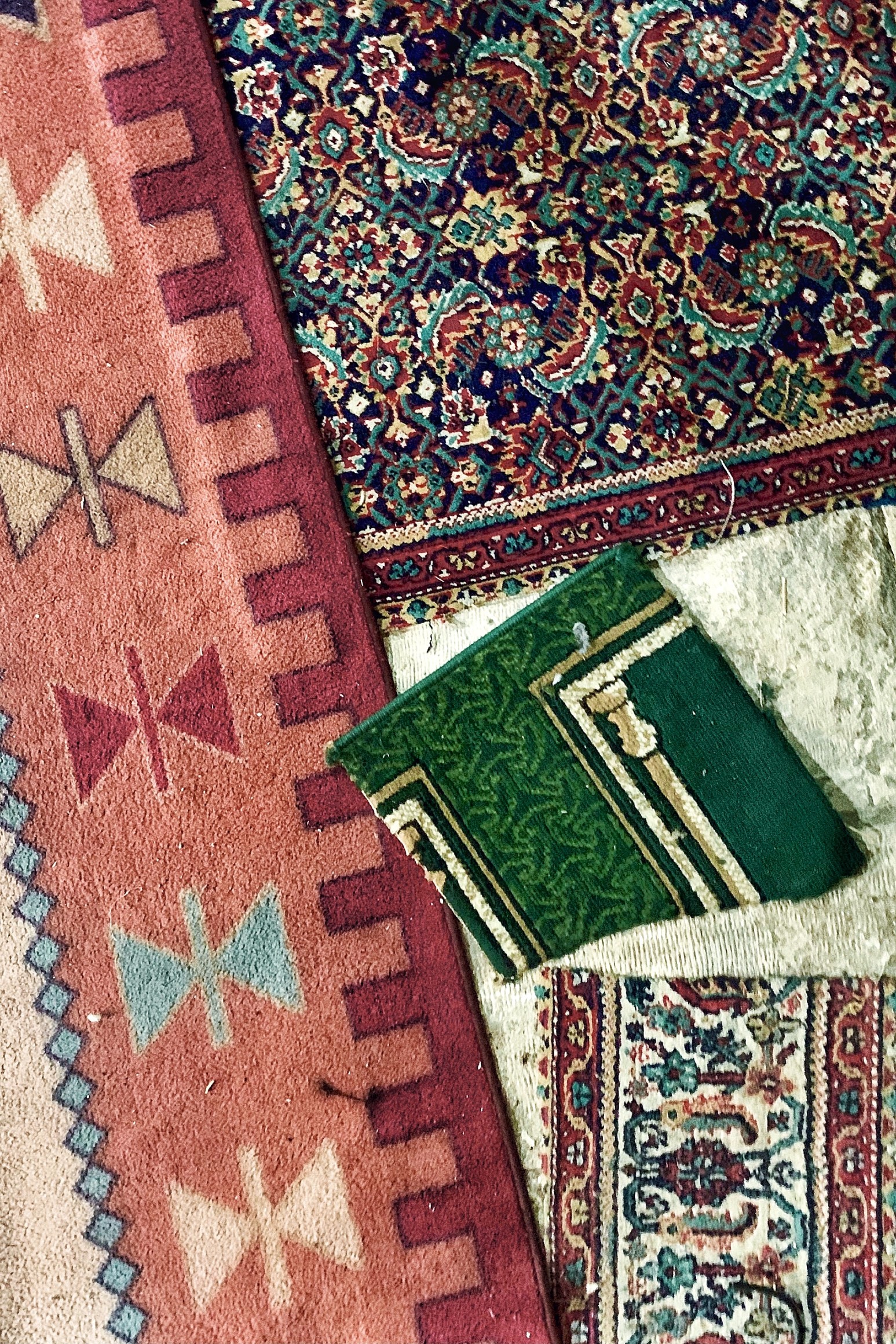 “The feedback was insane. The images confused people while resonating with them. Many thought they were collages when in reality they were the result of unplanned kindness,” El Hayawan recalls. “The photography itself was actually quite simple, I was merely the middle man observing. Real substance was in the people who gifted their carpets and those who arranged them.”
“The feedback was insane. The images confused people while resonating with them. Many thought they were collages when in reality they were the result of unplanned kindness,” El Hayawan recalls. “The photography itself was actually quite simple, I was merely the middle man observing. Real substance was in the people who gifted their carpets and those who arranged them.”
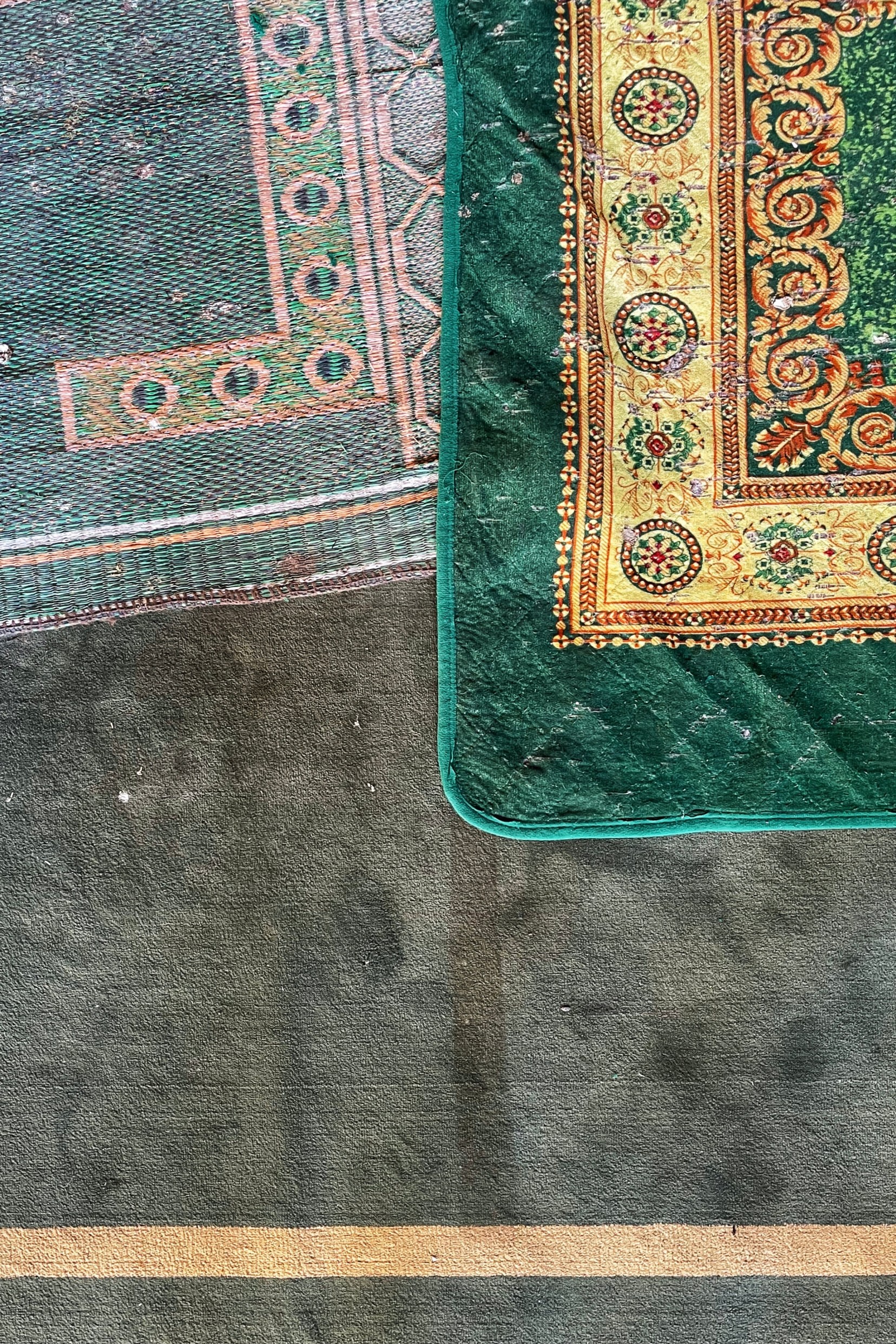 The photographer felt sentimental about this project. After all, it made sense. It was logical and relatable. “The rug owners weren’t dealing with these mosques as heritage sites, but as their neighbourhood mosque.”
The photographer felt sentimental about this project. After all, it made sense. It was logical and relatable. “The rug owners weren’t dealing with these mosques as heritage sites, but as their neighbourhood mosque.”
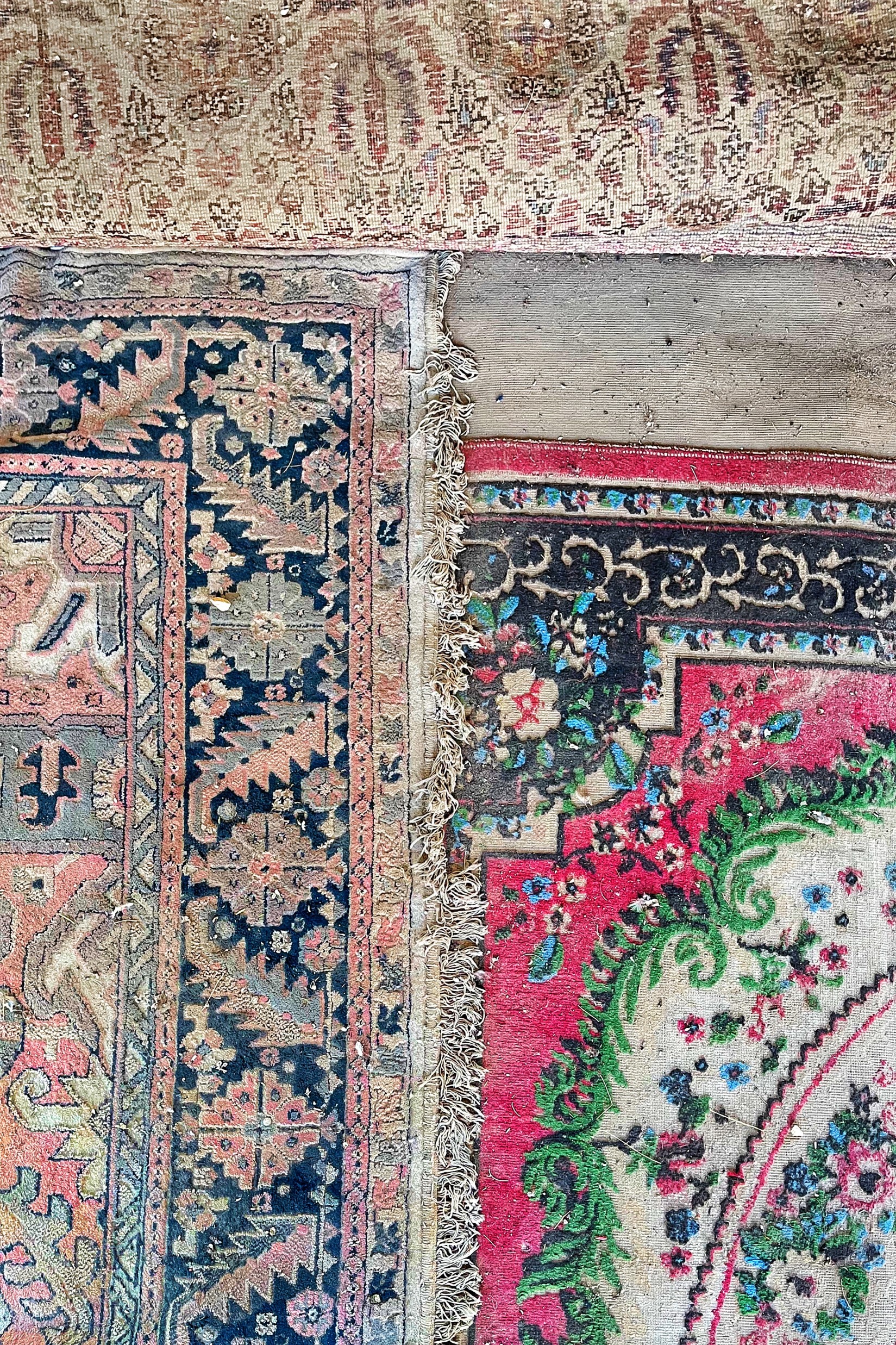 El Gouna Photo Week, which was held a fortnight ago, valued the observative brilliance of ‘Between Here & Elsewhere’ and had it exhibited alongside a video projection featuring contemporary dancer Amina Abouelghar swaying the Ghalya Benali’s vocal rendition of Natalie Merchant's union song ‘Which Side Are You On?’ while the sound of a vacuum cleaner at Sultan El Refai mosque played in the background.
El Gouna Photo Week, which was held a fortnight ago, valued the observative brilliance of ‘Between Here & Elsewhere’ and had it exhibited alongside a video projection featuring contemporary dancer Amina Abouelghar swaying the Ghalya Benali’s vocal rendition of Natalie Merchant's union song ‘Which Side Are You On?’ while the sound of a vacuum cleaner at Sultan El Refai mosque played in the background.
“The song presented a fundamental proposition, are you sympathising or are you criticising?” El Hayawan explains. “As for the project, it presented me with a new definition for beauty. Beauty is subjective and all but I came to the conclusion that beauty lies in intention. If something is intentionally produced, for whatever reason and in whichever way, then there’s beauty in it.”
- Previous Article The Enduring Charm of Jeddah’s Old Town of Al Balad
- Next Article Downtown Cairo's Iconic Cinema Radio Gets Gorgeous Gatsby-esque Revamp



